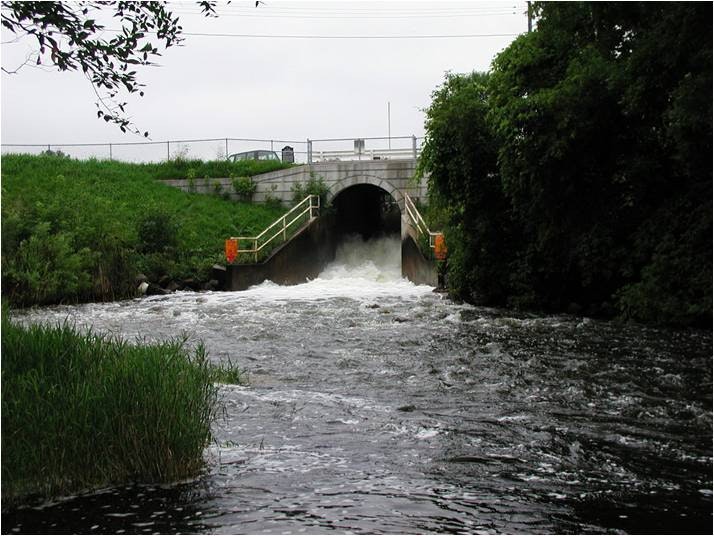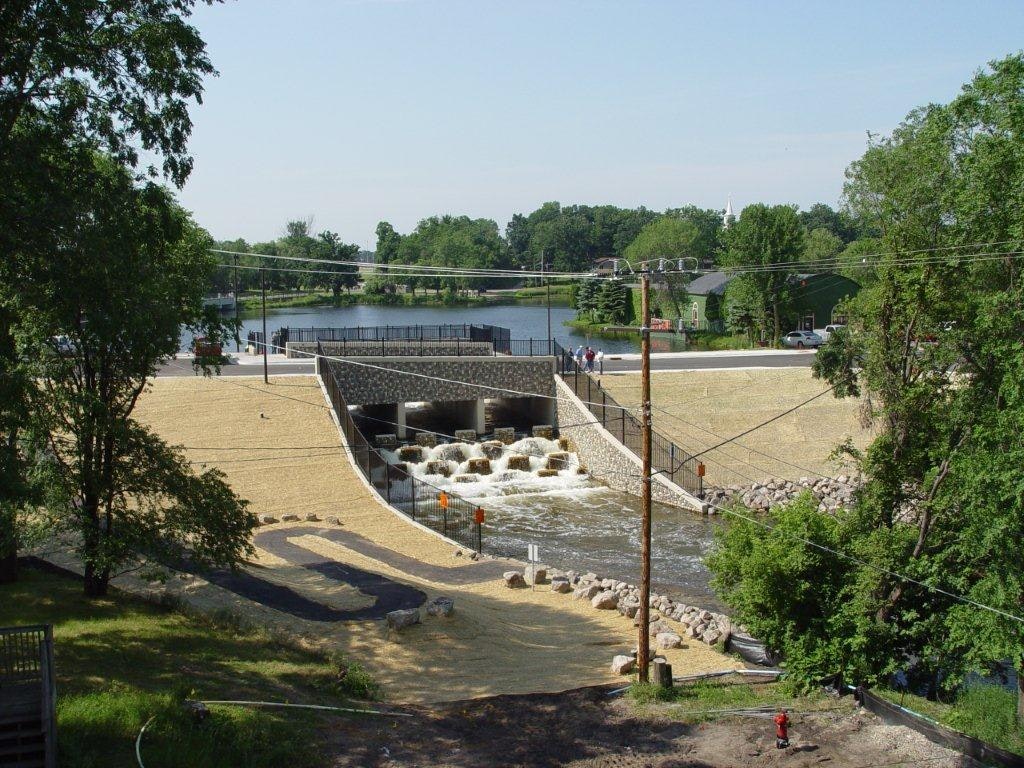New London Hydrogen Sulfide (H2S) Study












Background
Each spring, residents and visitors to the New London area may notice a strong “rotten egg” odor coming from the Mill Ponds area. This smell is caused by hydrogen sulfide (H2S)—a naturally occurring gas that can be released from the New London Dam and surrounding waters.
In 2002, the MFCRWD partnered with the UMN St. Anthony Fall Laboratory to conduct a one-time hydrogen sulfide study on Monongalia Lake. This study can be found at Dissolved Oxygen Demand at the Sediment-Water Interface in Monongalia Lake, Minnesota.
To better understand and address this ongoing issue, the Middle Fork Crow River Watershed District (MFCRWD), in partnership with the City of New London, is conducting a Hydrogen Sulfide Study and Community Survey. As a part of this study, the MFCRWD is deploying hydrogen sulfide air-quality sensors throughout the New London area. These sensors will collect data year-round to determine how hydrogen sulfide levels change throughout the seasons, which areas experience the strongest odors, and how these levels align with communiy experiences shared through the survey.

Take the Community Survey
Beginning January 5, all New London area residents and business owners are encouraged to complete the New London Hydrogen Sulfide Community Survey. The survey will remain open until January 25 at 11:59 p.m.
If you live in the area of New London, your feedback is essential. It will help us better understand how hydrogen sulfide odors impact daily life, business operations, tourism, and community well-being. The results will guide future efforts to identify and implement effective mitigation strategies.
For questions about the survey or hydrogen sulfide mitigation, please contact Erin Vruwink at erin@mfcrow.org or (320) 796-0888.
To access the survey online, please visit the New London Area Hydrogen Sulfide Community Survey or scan the QR code to the right.
Understanding Hydrogen Sulfide (H2S)
Hydrogen sulfide is a colorless gas known for its distinct rotten egg smell. It forms naturally when organic materials—such as leaves, algae, and other plant matter—decompose in low-oxygen or stagnant water conditions.
In the New London area, the Mill Ponds and dam structure can create environments where oxygen levels drop and organic materials break down, producing H₂S gas. When this gas rises to the surface or is released over the dam, it produces the recognizable odor many notice in the spring.
Potential Health and Environmental Impacts
Hydrogen sulfide may irritate the eyes, nose, and throat, and may cause symptoms such as:
- Watery eyes or burning sensations
- Coughing or shortness of breath
- Headaches, fatigue, or difficulty sleeping
- Nausea or dizziness
- More severe eye and respiratory irritation
(Source: OSHA Hydrogen Sulfide Fact Sheet, OSHA Hazards - Hydrogen Sulfide).
Prevention and Safety Measures
While hydrogen sulfide is naturally occurring, a few practical steps can help reduce exposure and odor buildup:
- Ensure good ventilation around enclosed spaces near water bodies.
- Avoid prolonged exposure in low-lying or confined areas where odors are strong.
(Source: OSHA Quick Card - Hydrogen Sulfide).
This collaborative effort between MFCRWD and the City of New London aims to better understand the source, intensity, and impact of hydrogen sulfide emissions—and to help identify long-term solutions that benefit residents, businesses, and the local environment.
About the H2S Study
The MFCRWD is conducting a year-round hydrogen sulfide monitoring study to better understand how H₂S levels vary across the New London area. As part of this effort, multiple air-quality sensors designed specifically to measure hydrogen sulfide are being installed at key locations throughout the community. These sensors will continuously record H₂S concentrations in all seasons, allowing us to track how levels change with weather, water conditions, and seasonal activity in the Mill Ponds. By gathering long-term, high-resolution data, the study will help identify which areas experience the highest and most frequent odor events. This scientific data will be paired with community feedback collected through the New London Area Hydrogen Sulfide Survey to provide a more complete picture of how hydrogen sulfide affects daily life, business operations, outdoor recreation, and overall well-being. Together, the sensor data and survey results will help guide future decisions about mitigation practices, inform potential engineering or ecological solutions, and support long-term planning efforts between MFCRWD and the City of New London.
